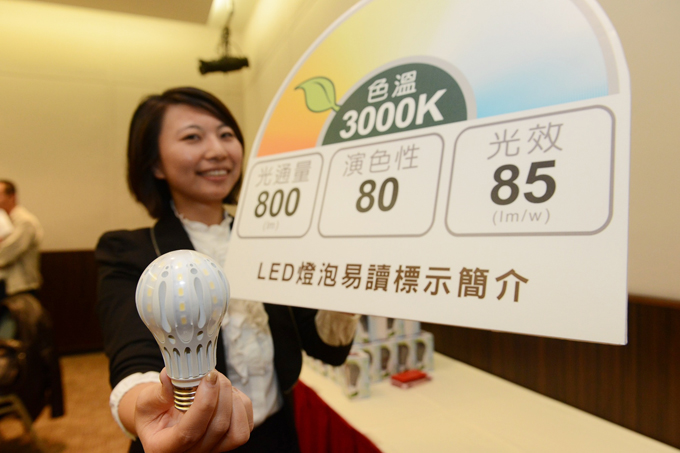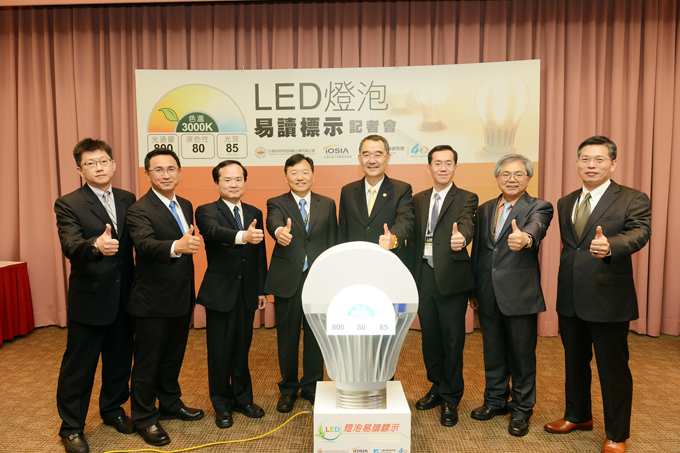User-friendly Label to Better Regulate LED Lamp Quality in Taiwan
2013/05/29 | By Ken LiuIt seems that eco-conscious consumers in Taiwan have their work cut for them when choosing LED lights. The Industry Technology Research Institute (ITRI), Taiwan Optoelectronics Semiconductor Association (TOSIA) and Taiwan Lighting Fixture Export Association (TLFEA) have introduced a user-friendly factsheet label system to better regulate LED lamp quality in the local market.

The system simply demands LED lighting suppliers to provide various specifications on a specially-designed factsheet label after passing a review by the three organizations and conducted by TOSIA. The completed label will be stuck on package boxes, hence enabling consumers to easily identify correlated color temperature (CCT), luminous flux, color rendering index (CRI) and luminous efficacy, which are also designed to be easily understood by even laymen.
CCT is a simplified characterization of the visible light spectrum, specifically the absolute temperature (in Kelvin) to which one has to heat a theoretical black body to produce light in a continuous spectrum and of a certain color. The higher the color temperature, the cooler the light.
Luminous flux is the quantitative measure of visible light, expressed in power emitted per unit angle from an isotropic radiator, a theoretical point source that radiates equally omni-directionally, with the standard unit of flux being lumen, which is calculated by multiplying wattage with luminous efficacy.
Luminous efficacy as the name implies measures how easily light is emitted from a source, being the ratio of luminous flux to power, hence the higher the ratio, the higher the efficiency.

CRI quantitatively measures the ability of light source to illuminate objects in faithful colors in comparison with sunlight. Incandescent light bulb’s CRI, despite being energy-inefficient, closely simulates sun’s 100, with that of fluorescent lamp being around 60-70 and high pressure sodium lamp of around 20-30.
The TOSIA will invite suppliers to apply for labels in May. TOSIA chairman B.J. Lee, also chairman of LED chipmaker Epistar Corp., says that LED lighting is arguably the best energy-saving light not just for outstanding energy-efficiency but light-color versatility. However, Taiwan’s LED-lamp manufacturers and consumers, he stresses, are at the mercy of inconsistent product label by some suppliers and deficient regulation on some products due to divergent technology and performance parameters between LED and conventional lighting.
Chairman of the TLFEA, David Chang, points out that a voluntary audit scheme like the label system can help to monitor LED-lamp quality to make shopping for such lighting easier, also hoping that more LED-lamp suppliers would voluntarily join the effort to accelerate upgrading of Taiwan’s LED-lighting industry.
C.T. Liu, general director of ITRI’s Electronics and Optoelectronics Research Laboratories, points out that the factsheet system has the support of six of Taiwan’s trade associations, including the International Commission on Illumination-Taiwan (CIE-Taiwan), a branch of the Vienna, Austria-headquartered CIE, whose members will put such labels on product packages.
The Industrial Development Bureau (IDB) of the Ministry of Economic Affairs (MOEA) also agrees to use the label in its MIT Smile Product Certification System, which was set up in 2010 specifically to upgrade the trustworthy, quality image of Taiwan-made products internationally and locally.

